 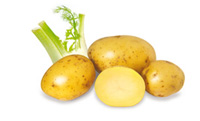 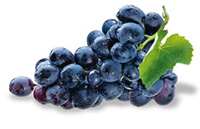
Fresh juice gives life. It is the gift given by the Mother Nature to nourish the healthy and to nurse the sick back to health! Therefore, it is not just an excellent source of vitamins, minerals, enzymes, purified water, proteins, carbohydrates and chlorophyll.
Liquid Fuel
Because it is in liquid form, it supplies nutrition that is not wasted to fuel its own digestion as it is with whole fruits, vegetables, and grasses.
Therefore, the body can quickly and easily make maximum use of all the nutrition that fresh juice offers.
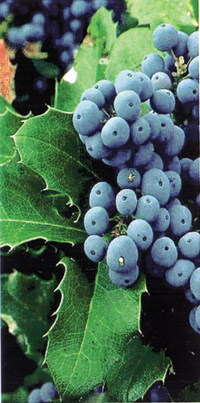
Commercial blends of juices might contain:
- Banned pesticides and other substances
- “Juicy” and “natural” juices are made from concentrates and reconstituted
- Reconstituted with filtered tap or well water from factory property in industrially zoned areas
- Additives. Food manufacturers routinely add artificial colors and flavors, sugar, corn syrup, salt, and chemical preservatives to their products – and juices are no different.
- By advertising their products as “natural” or “health” beverages, they mislead consumers: not very much different from the soft drinks
Freshly Prepared Organic Juices Are The Best!
The Keyword here is “FRESH”. We advocate drinking pure, fresh juices made at home with an electric juice extractor. There are several high-quality bottled juices, but fresh juices remain the superior choice in both taste and nutrition. Editor's note:However, the so called "fresh" fruits and vegetables you bought from the local market (Singapore) are no more fresh, as they're harvested before fully ripe, have irradiated and/or sprayed with preserving agents, travelled hundreds of miles, stored in the cold room for up to months before appearing in front of you!
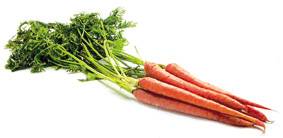
Anyway, just 500ml of fresh, organic carrot juice, for example, contains more than 20,000 international units (IU) of pro-vitamin A (beta carotene) in its purest and most natural form. That is four times the Recommended Daily Allowance (RDA) for vitamin A.
Fresh Juices Have Preventive Effect
Fresh juices, because of their nutritional excellence, may prevent diet-related illnesses. A growing body of research reveals that juice may even cure a variety of illnesses and conditions.
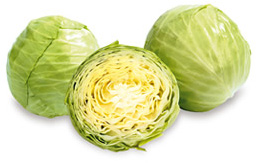
- Cabbage juice ( sauerkraut juice) contains vitamin U, can heal peptic ulcers
- Fresh apple and prune juices are excellent laxatives
- Green juices contain enzymes that foster weight loss by stimulating the metabolic system
- Alfalfa sprout juice supplies vitamin K, a blood coagulant important to the health of pregnant women
- Watermelon and cucumber juices are safe and natural diuretic.
- Orange, yellow and green vegetable juices contain pro-vitamin A, may help prevent some forms of cancer
Although fresh juice provides excellent nutrition it is not a “magic bullet”. The maximum long-term health benefits will be achieved by incorporating fresh juices into a nutritious and balanced diet.
What’s wrong with the Modern Diet?
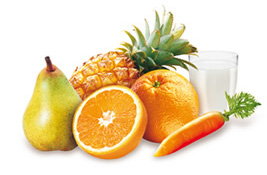
- Too few fresh fruits and vegetables
- Too many overcooked, processed foods
- Excessive unhealthy fats (animal fats and hydrogenated and denatured oils)
- Excessive protein
- Insufficient dietary fibre
What’s wrong with vitamin/mineral pills?
Most are synthesized from coal tar or other petroleum derivatives. May be chemically identical to vitamins found in fresh juices, but biological activity may have only a fraction of the vitamins found in the live foods.
Naturally derived vitamins from fresh fruits, vegetables, sprouts, grasses, and their juices ere designed by Nature to supply high-quality nutrition capable of sustaining human life.
Juice and Nutrition
Vitamins –
- Are organic compounds, effective in minute amounts, the body cannot manufacture on its own.
- Are used as fuel to energize essential processes such as metabolism, growth, and repair.
- Vitamin A promotes normal growth and development, fosters proper eyesight, maintains clear, healthy skin and cancer prevention. Fresh carrot or green juices.
- Vitamin B complex – a group of vitamins that works together to help the body digest and use the energy in carbohydrates. Also promotes resistance to infection. Whole grains, green and sprout juices and citrus juice.
- Vitamin C – a panacea, capable of curing colds, heart disease, cancer, and other ailments. Is an antioxidant – a substance that protects important molecules and structures in the cells from being destroyed by oxygen. Helps protect the nerves, glands, joints, and connective tissues from oxidation, and also aids in the absorption of iron. All fresh fruit and vegetable juices are excellent sources of vitamin C.
- Vitamin E – another important antioxidant. Helps the heart to function, and promotes the use of fatty acids. May protect fertility in women and men. Fresh beet, celery and green juices, whole grains, seeds and nuts.
Minerals -

- In foods, minerals are always combined with specific amino acids, sometimes with vitamins – “Chelation”.
- Chelated minerals are preferable to synthetic minerals because the body easily recognizes and uses minerals in chelated form.
- Fresh juices contain the balanced, chelated minerals to help keep the body’s energy level high, the nerves calm; and the muscles, heart, hair, teeth, bones, and nails strong. Also kep the blood clean and the blood pH (its relative alkalinity or acidity) balanced.
- Potassium – maintaining the electrochemical balance of tissues of the heart and all other muscles.
- Iron – component of red blood cells. Transports oxygen to the lungs and aids in cell respiration.
- Phosphorus – essential to the proper function of the brain and nerves.
- Calcium – maintains the acid/alkaline balance of the blood and strengthens bones.
- Sulfur – aids the functioning of the brain and nerves. Is a body cleanser.
- Iodine – fuels the thyroid gland, which controls the body’s metabolism.
- Magnesium – aids in muscle relaxation, protein synthesis, energy production and is a natural laxative.
- Manganese – necessary in the functions of the brain.
- Germanium – aids in the function of the immune system and bowels.
- Selenium – works with Vitamin E to delay oxidation of fatty acids.
- Sodium – with potassium, calcium, and magnesium, works to neutralize acids, maintain cell integrity, and keep tissues’ electromagnetic energy intact.
Fluids -
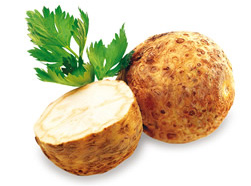
- At least 70 % of the body is composed of water
- Water is a major component of the blood. Blood feeds the cells and carries away waste products of metabolism.
- Fresh juices help to cleanse the blood while improving its important chemical and electromagnetic qualities. The transfer live plant energy to our bodies.
- Beverages such as coffee, tea, soft drinks, beer, flavored drinks, alcoholic beverages and tap water contain sugar, additives, preservatives, chlorine, fluoride, caffeine, and a host of other ingredients that the body must eliminate before it meets its needs for purified fluids. Key organs of elimination such as the kidneys and liver are taxed.
- The fluid in fresh juices is pure water, distilled by Nature. It contains no harmful substance, it does not tax the organs of elimination.
- The pure fluids in fresh juices are excellent for quenching the thirst. Eg. Juicing 4 parts of watermelon rind with one part each cucumber and celery, mixing in an equal proportion of spring water – a superior mineral-electrolyte drink to take after strenuous exercise.
Enzymes -
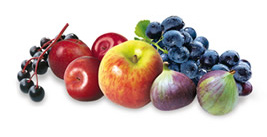
Are the body’s labor force, the active construction-and-demolition teams that constantly build and rebuild the body. Approximately 1,000 of them are known. At any one time, there will be millions of enzymes working in every living body. Enzymes are found in all living things, including food in its raw, uncooked state. It is the enzymes that cause fruits to ripen.
- Each food is replete with enzymes that help break down the elements found within it.
- Bananas are rich in carbohydrates and contain amylase, a carbohydrate-splitting enzyme
- Raw butter (high in saturated fat) is rich in lipase
- When foods are eaten raw, the food enzymes within them do much of the work of breaking down the foods in our stomachs and small intestines, saving our bodies’ own enzyme labour force from having to do so.
- Enzymes are extremely sensitive to heat.
Amino acids -
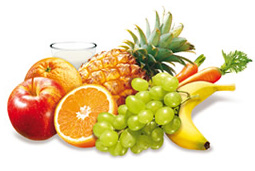
Next to water, protein is the most plentiful element in the body. More than 50% of the dry weight of the body is composed of protein. Proteins are composed of protein chains called amino acids – are the raw materials used to build. Together with enzymes, amino acids are responsible for cell renewal and an array of diverse functions – from the making of hormones to the building of muscles, blood, and organs.
There are eight major amino acids called essential amino acids, which the body can synthesize only from the foods we eat.
- All fresh juices contain amino acids in an easy-to-digest form.
- Juices made using plenty of sprouts and leafy greens contain highest concentrations of essential amino acids.
- Isoleucine- is important for blood sugar regulation, muscle development and repair, haemoglobin development, and energy regulation. Deficiencies of isoleucine result in possible dizziness, headaches, fatigue, depression, confusion and irritability.
- Lysine – potential anti-aging factor. Activates hormones and enzymes. Body growth and blood circulation. Without enough lysine, our immune response weakens, sight affected, fatigue occurred
- Leucine – keeps us alert and awake, high energy. Insulin deficiency is known to result in poor utilization of leucine; therefore, individuals who suffer from glucose intolerance may require higher levels of leucine intake.
- Tryptophan – is a precursor for serotonin and melatonin. It is essential for building rich, red blood, healthy skin and hair.
- Phenylalanine – aids the thyroid gland to produce thyroxin hormone for mental balance and emotional calm. Phenylalanine serves in the body as a precursor to the catecholamine family of hormones. These hormones include adrenaline and noradrenaline, which are activating substances in the central and peripheral nervous systems. Deficiencies are rare but can include slowed growth, lethargy, liver damage, weakness, oedema, and skin lesions.
- Threonine – stimulates smooth digestion, assimilation of foods and overall body metabolism. It is important for antibody production. Deficiencies can result in skin disorders and weakness.
- Valine – activates the brain, aids muscle coordination and calms the nerves
- Methionine – helps cleanse and regenerate cells of both the kidney and liver. Stimulates hair growth and mental calmness.
It supplies sulphur and other compounds required by the body for normal metabolism and growth.
Chlorophyll
Chlorophyll is a green, proteinous compound found in the leaves of plants and in grasses. It’s an external and internal healer and cleanser, fresh chlorophyll juice is second to none.
- Antiseptic
- Cell stimulator and rejuvenator
- Red blood cell builder
- Prevent certain types of cancer
- Wheatgrass juice is a super blood and cell builder, cleanser and overall regenerative tonic.
- Chlorophyll molecule itself is remarkably similar to hemoglobin
- In experiments, animals have been able to convert chlorophyll into hemoglobin. Some believe that humans have the same ability
- Vegetables rich in chlorophyll are: Lettuce, kale, alfalfa, cabbage, spinach, buckwheat greens, sunflower greens, parsley, celery, cucumbers, green peppers.
|













